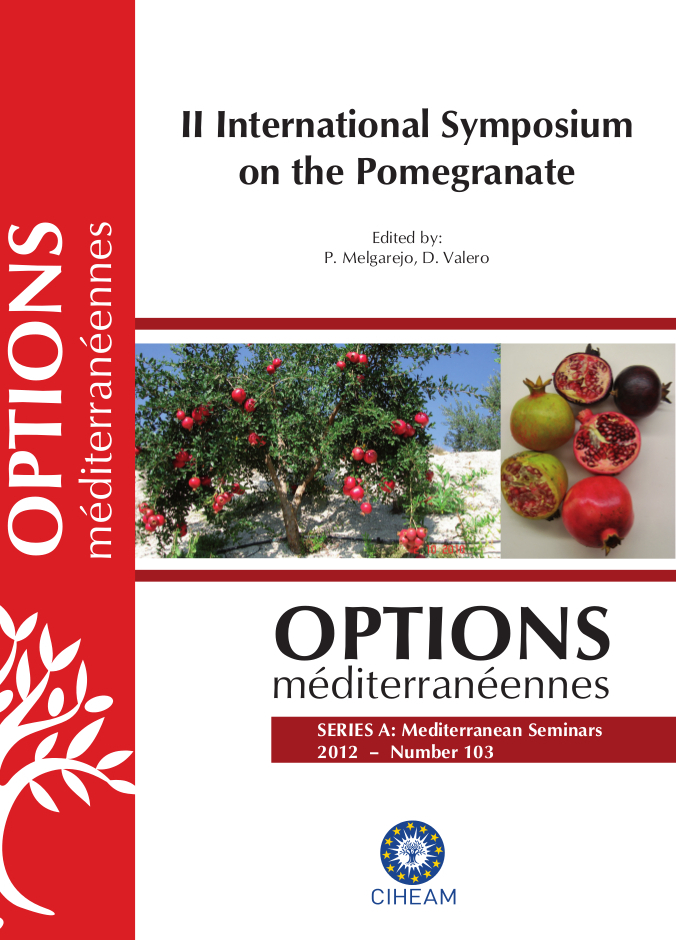| Article précédent | p. 261-264 | Article suivant |
The pomegranate industry in China – Current status and future challenges
The pomegranate, one of the oldest fruits known to man, was originally thought to be a native to China. Actually, it was brought to China through the Silk Road during the Tang Dynasty (600-900 BCE). The current production is estimated as 1,600,000 tones and the planted area of 110,000 Ha. Although the pomegranate adopts itself to a variety of climatic conditions and pomegranate can be found in many parts of China , the major orchards in China are in the provinces of Sichuan, Chongqing, Shandong, Shaanxi and Henan. Other provinces where pomegranate is produced (although on a smaller scale) include the provinces of Xinjiang, Hebei, Guangdong and Yunnan. There are over 200 different varieties of pomegranate in China, which vary from province to province, with a range of weights, from 300-1200gr, a scale of colors from light green to deep red and a range of skin thicknesses and kernels hardness (from soft to hard kernels). They also vary in their sugar content and other ingredients in the arils and the rind. The vast size of China constitutes, both, its potential strength, but also the source of its difficulties, which is reflected also in the Chinese pomegranate industry. Although China is one of the world’s biggest producer of pomegranate (the biggest, according to some sources), its methods of cultivation resembles a gardening art rather than modern agriculture. Although some significant changes were introduced in recent years, agriculture in China is still characterized by labor intensiveness and small scale and it is a far cry from modern horticultural methods. The current situation is characterized by rather primitive methods of irrigation, lack of adequate facilities for sorting, sizing, packing, transportation and storage especially, cold and CA storage, which results in a relatively low quality of the product and inconsistency in the quality. The fruit is marketed, almost exclusively, in local markets because the current quality can’t meet the competitive market economy requirements. China’s rapid growth and structural changes, while resolving many problems, have also given rise to new challenges. Nevertheless, China has the capacity to meet these challenges. With the proper guidelines, including training, technology transfer and acquisition of know-how and modern equipment its potential can be realized.
- [ Afficher ]
- [ Télécharger ]
- [ Exporter la citation ]
Vous pouvez télécharger la citation au format :
- [ Imprimer ]
-
Mots-clés
CHINE, EXTRACTION, GRENADE FRUITS, TRAITEMENTCiter cet article
Sarig Y., Galili A. The pomegranate industry in China – Current status and future challenges. In : Melgarejo P. (ed.), Valero D. (ed.). II International Symposium on the Pomegranate. Zaragoza : CIHEAM / Universidad Miguel Hernández, 2012. p. 261-264. (Options Méditerranéennes : Série A. Séminaires Méditerranéens; n. 103). 2. International Symposium on the Pomegranate, 2011/10/19-21, Madrid (Spain). http://om.ciheam.org/om/pdf/a103/00006965.pdf



